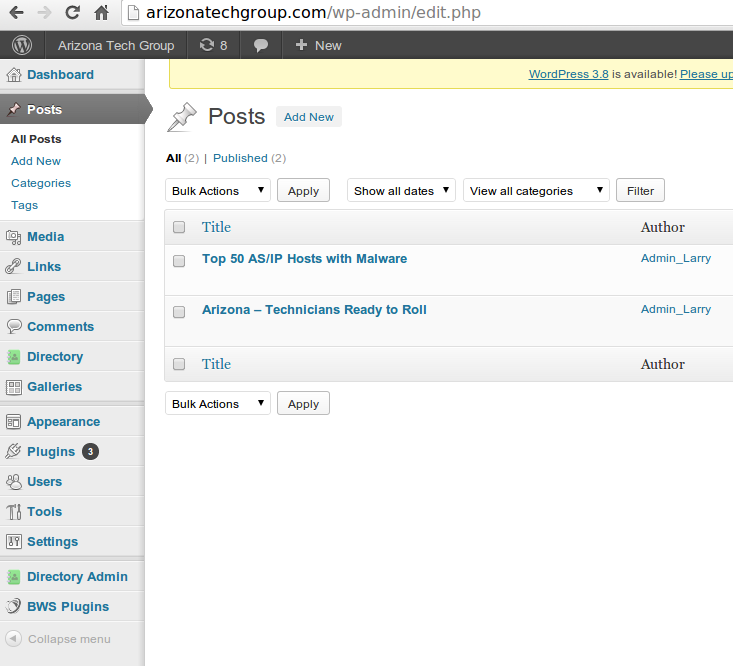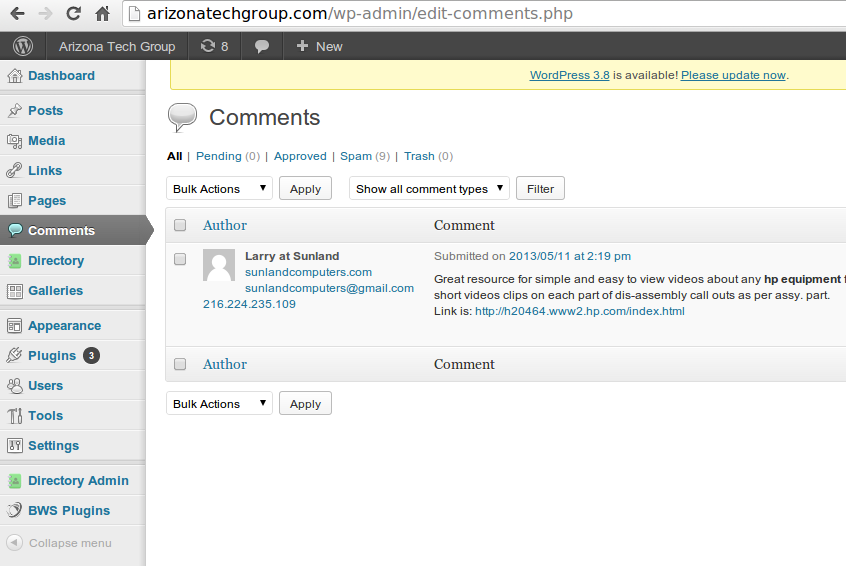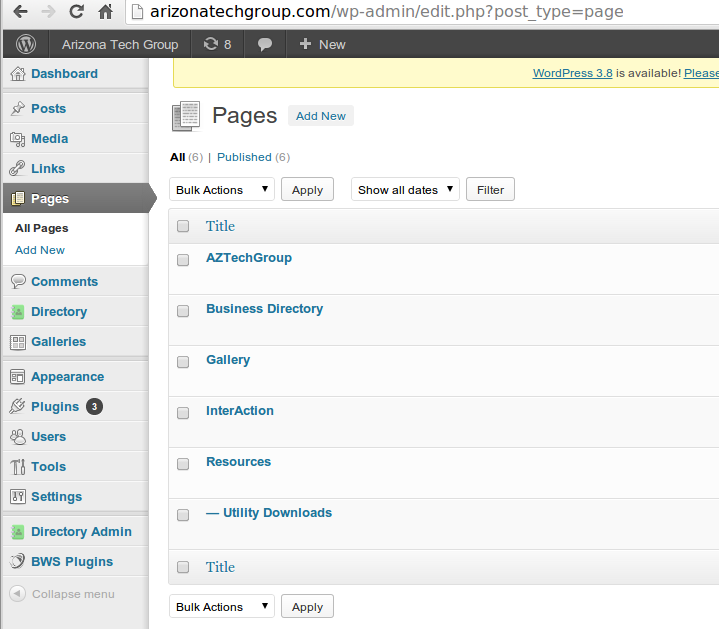Learning How to Use WordPress
Learning Wordpress for beginners and for those who have not really used it much.
Learning Wordpress for beginners and for those who have not really used it much.
There are few types of posts on WP so lets go over these real fast.
A post is just another name for an article or "content" and you will soon see how a Post can be used inside of a page.
Most blogging Websites use posts as a means to display information they want to 'POST' to the public.
Not all Websites are blogs but all WordPress websites use the post to handle content.
Posts are entries listed in reverse chronological order on the Home page or on the posts page a.k.a. The Blog. If you have created any sticky posts, those will appear before the other posts. Posts can then easily be found in the Archives, Categories, Recent Posts, and other navigation items as links; where a visitor to your site can click on the links and read the related posts they are interested in. Posts are also displayed in the RSS feed of the blog.
RSS is a way of sharing your posts with other blog Websites that have an interest in your blog posts and vice versa. You can control how many posts are displayed at a time in the Reading Settings of your Admin Panel. The URL for a post includes the date the post was published like this: http://blogname.wordpress.com/2008/11/30/post-title/
Comments are a way for visitors to add feedback to your posts and pages. If you choose to enable comments for your posts, then a comment form will appear at the bottom of the posts and people can respond to what you have written.
Your Website may or may not use Comments. Having this ability to comment on a post is what makes a blog a blog. But WordPress is also so well designed for inputing and updating information that a large amount of Websites do not have Comments nor do they have Posts. These kind of WP sites may only be using WordPress for the ease of managing the content of the page since the editor may not be familiar with HTML or PHP code formats that are not so easy to learn but are the main alternatives for managing content without the advantage of a CMS <--- remember what this term means? Content Management System.
Pages are most used as a type of web page that can display information which may never have to change or which are slated to be changed whenever you have new information you want to update your site with. You can have Posts on a Page but most people only use Pages for permanent content that will not change very often.
In most cases these "Static" pages are reachable to the public via the Menu at the top of your Website. These pages have their own behavior and are not like Posts or Comments since they are not INTERACTIVE or accessible to Bloggers who may want to comment on what your post is stating.
Pages are not listed by date or Category, like a Post is. Most commonly you can navigate to a Page by clicking on a top or side menu, to access the pages. If you have 50 pages and you use the Pages widget*, then all pages will be listed and easy to find. The URL for a page looks like this: http://websitename.com/page-title-name/
* Widgets are a very fun part of WP. They can be used for many various functions and usually are small boxes that you can put up on your site that display on the side bars or on the footer area or even sometimes you get a widget that is part of the content main page which may be something as simple as a calendar to post event dates to or even a complex scheduling widget that will allow interaction from outside members who have a log in to that widget and can add information to the widget.


